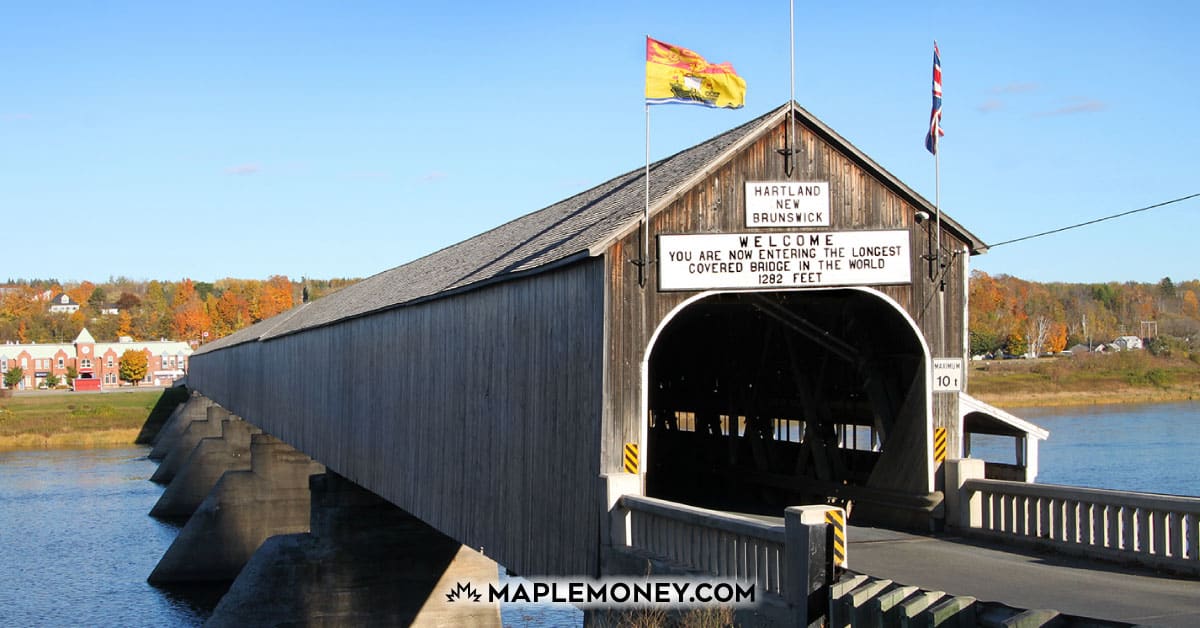What Is Bridge Financing? Why You Might Need a Bridge Loan for Your Mortgage

In a perfect world, the process of buying and selling a home always goes according to plan. The important dates align with your schedule, and you never have to worry about contingency plans or having to be flexible. Unfortunately, that’s not the way it usually goes. Sometimes, you need to make alternate arrangements when you are dealing with real estate. Enter bridge financing.
What Is Bridge Financing?
Bridge financing, also known as a bridge loan, provides homebuyers with temporary financing to facilitate the purchase of a new home when they have not yet received the sale proceeds from their previous home. In other words, the possession dates of the purchase and sale don’t align perfectly.
When Might You Need to Get a Bridge Loan?
If you own a house and you decide to move, there’s a good chance that your home equity will be the source of the down payment of your new home. It’s a straightforward transaction. You sell your house, and on the possession date or shortly thereafter, you receive the net proceeds from your sale after your mortgage and any closing costs have been accounted for.
But what happens if the possession date for the sale of your home falls after the closing of your new home. You won’t have 100% of the required funds in time for your new purchase to close. In this case, you need temporary financing because the vendor needs their money on the possession date.
Some homebuyers can bridge the gap from their own resources, i.e., their personal savings or borrowing funds from a family member. If you’re not one of them, you need a bridge loan.
Do All Mortgage Lenders Offer Bridge Loans?
All major lenders, such as the big banks, offer bridge loans to their mortgage customers, as do many credit unions. However, some of the smaller mortgage companies don’t offer bridge financing, so you must check with your mortgage broker as well as your primary bank before you buy or sell a home. Most banks will only issue you a bridge loan if you are getting a mortgage through them.
I Don’t Have a Mortgage. Can I Still Get a Bridge Loan?
Not everyone who buys and sells a home needs a mortgage. For example, you may be mortgage-free and plan to purchase your new home with 100% cash from the sale of your existing home, with no need for mortgage financing. However, because of the real estate transaction’s timing, you may still need a bridge loan.
If this is the case, check with your lender to make sure they are willing to give you a bridge loan without any mortgage involved. If you have a good relationship with your bank, they should be willing to do this on an exception basis.
How Bridge Loan Interest and Payments Work
Because bridge loans are temporary in nature, they are established with a very short term. Full payment is usually expected within 90 days. The payment is interest only. While interest is calculated from day one, interest payments usually begin at the 30-day mark. Often, bridge loans are paid in full before the first interest payment is due.
Interest rates vary, with an average bridge loan interest rate falling in the neighbourhood of prime +2.00%. Prime refers to the Bank of Canada’s prime lending rate, which fluctuates periodically.
How to Calculate Your Bridge Loan Amount
There is no shortage of fees involved in buying and selling a home. So, before the lender advances your bridge loan, they need to calculate your net proceeds to ensure you can cover the entire bridge loan. For illustration purposes, I’ve put together a sample bridge loan calculation:
Sale of 123 Anywhere Street (Possession Date of June 1st)
Sale Price: $350,000
Less: Payout 1st mortgage: $210,000
Realtor Fees (5% of sale): $ 17,500
GST on Realtor fees: $ 875
Estimated closing costs: $ 10,500
————-
Net Proceeds available
For down payment*: $111,125
*You may need to account for additional expenses, depending on your situation. Examples would be moving expenses or paying off other debts, i.e., loans, credit cards.
As you can see, you will have $111,125 available from the sale of your home. If required, your bridge loan could be as high as $111,125.
Purchase of 456 New Place Drive (Possession Date of May 15th)
Purchase Price*: $400,000
20% Down payment: $ 80,000
New 1st Mortgage Amount $320,000
Because the down payment required is less than the maximum bridge loan of $111,125, you will qualify for a bridge loan of $80,000 to cover the down payment and finalize the purchase transaction on May 15th.
Illustration Summary:
The purchase price reflects the amount to be paid to the vendor on the closing date of your new home (May 15th). Of the total amount (400K), $320,000 will be advanced by your lender from the proceeds of your new mortgage. The $80,000 remaining will come from bridge loan proceeds.
In the above example, because the purchase of your new home (May 15th) takes place two weeks before the sale of your existing home (June 1st), you will have to take out a bridge loan of $80,000 to cover the down payment, until your lawyer receives the proceeds of your sale and can pay off the bridge loan. Depending on what province you live in, it can take up to a few weeks after your sale before you receive the funds.
How to Get a Bridge Loan: 3 Steps
The process of getting a bridge loan varies at different lenders, but here is a general step-by-step guide on how to get a bridge loan. Always check with your lender before buying or selling a home to make sure they will offer you a bridge loan and understand how their process works.
Step 1. Notify Your Lender
When you’ve established that your purchase closing date will occur before the sale of your existing home, let your lender know as soon as possible so that they can plan the bridge financing.
Step 2. Apply for a Bridge Loan
You should apply for bridge financing no later than a month before the first closing date. You will need a firm purchase and sale before you can be approved for bridge financing. This means that the purchase and sale offers must have all conditions met. If so, you can proceed to apply for a bridge loan through your mortgage lender. They will let you know when it’s the right time. Please don’t leave it until the last second.
Step 3. Sign the Bridge Loan Documents
Your lender may have a document for you to sign once the mortgage is approved, but the bridge loan agreement is typically signed at the lawyer’s office. Before the closing date, your lawyer will request the bridge loan funds from your lender and forward a letter of direction to them, confirming that payout will occur as soon as the sale proceeds are received.
How Are Bridge Loans Secured?
You may be wondering what security your lender has in place to ensure that your bridge loan is paid in full. It is temporary financing, after all. Security for bridge loans comes in the form of a lawyer’s letter of direction.
Your lawyer signs a letter of direction for the bank, guaranteeing that upon receipt of your sale proceeds, they will control the full payout of the bridge loan before releasing any net proceeds to you, the seller. Because the lender has calculated all of the sale costs (as per the sample calculation above), they know that there will be enough funds.
Final Thoughts on Bridge Loans
I hope that you now have a better understanding of how bridge financing works. It’s a well-known fact in the real estate industry that people who are selling their home and moving to a new house may require a bridge loan. So, when the time comes, ask your bank advisor or mortgage broker early in the process about whether you may need bridge financing to ensure that it all goes smoothly.


